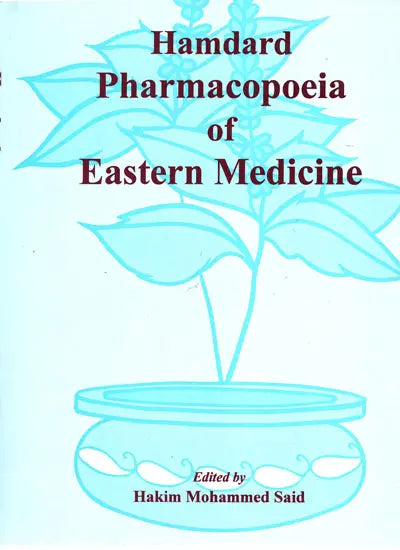Hamdard Pharmacopoeia of Eastern Medicine
Hamdard Pharmacopoeia of Eastern Medicine is backordered and will ship as soon as it is back in stock.
Couldn't load pickup availability
Genuine Products Guarantee
Genuine Products Guarantee
We guarantee 100% genuine products, and if proven otherwise, we will compensate you with 10 times the product's cost.
Delivery and Shipping
Delivery and Shipping
Products are generally ready for dispatch within 1 day and typically reach you in 3 to 5 days.
Book Details:
-
Title: Hamdard Pharmacopoeia of Eastern Medicine
-
Author: Hakim Mohammed Said
-
Publisher: Sri Satguru Publications
-
Edition: 1997
-
ISBN: 9788170305200
-
Pages: 588 (Illustrated Throughout in B/W)
-
Cover: Hardcover
-
Dimensions: 29 cm x 21.5 cm
About the Book:
The Hamdard Pharmacopoeia of Eastern Medicine offers an in-depth exploration of Eastern medicinal systems, specifically the Chinese, Ayurvedic, and Greco-Arabic traditions. Compiled by Hakim Mohammed Said, a renowned figure in Eastern medicine, this volume serves as a comprehensive guide to the knowledge of medicinal plants and therapeutic practices that have been passed down through centuries.
The book is divided into four main sections:
-
Survey of Drugs and Medicinal Plants – A detailed list of medicinal plants used across various Eastern medical systems, accompanied by insights into their therapeutic applications.
-
Pharmacopoeia Standardized by Hamdard – This section introduces the Hamdard pharmacopoeia, which standardizes the various traditional remedies into a more systematic and scientifically-grounded approach to Eastern medicine.
-
Pharmaceutical Codex of Eastern Medicine – A compilation of detailed pharmaceutical practices and codices employed in Eastern medicinal preparations, aimed at preserving the efficacy and quality of traditional remedies.
-
Selected Papers on Drug Research – The final section covers the contemporary research conducted on the various medicinal plants and herbs from the Eastern pharmacopoeia, shedding light on ongoing studies and advancements in the field.
The book is heavily illustrated, showcasing black-and-white images of various medicinal plants, formulations, and ancient texts, enriching the reader's understanding of these age-old therapeutic systems.
Preface:
The preface outlines the long-standing tradition of Eastern medicine, which has been practiced for millennia with the primary goal of alleviating human suffering through natural remedies. The book emphasizes the importance of studying these ancient healing systems without prejudice, arguing that they are as scientific and effective as modern medicine, provided they are studied and utilized properly.
The revival of interest in natural remedies and herbal medicine in modern times has led to an increased focus on the therapeutic uses of indigenous herbs. The book also highlights the growing movement of research into natural cures and the collaboration between traditional healing practices and modern scientific methods.
The author shares the belief that studying these systems, understanding the history of medicinal plants, and embracing the benefits of these healing methods can help alleviate various diseases and contribute to holistic health practices.
Historical Context:
The volume also offers historical insights into the origins of Eastern medicine, tracing its development from ancient civilizations such as Egypt, Babylonia, Greece, and China. The book explores how ancient texts and medicinal knowledge, such as those from the Ebers Papyrus and Assyrian tablets, laid the foundation for the modern understanding of pharmacology.
Moreover, it covers the contributions of key figures in the history of medicine, such as Hippocrates, Dioscorides, Galen, Avicenna, and Ibn al-Baitar, whose works have profoundly shaped the development of both Eastern and Western medicine.
The volume provides extensive details on Eastern pharmacological traditions, such as the Ayurvedic, Unani, and Chinese systems, highlighting their historical evolution and their ongoing relevance in the modern world.
Conclusion:
The Hamdard Pharmacopoeia of Eastern Medicine is an invaluable resource for anyone interested in the field of traditional medicine. Whether you're a student, researcher, or healthcare professional, this comprehensive volume offers a thorough understanding of the historical, philosophical, and scientific aspects of Eastern pharmacology. Through its detailed exploration of medicinal plants, standardized pharmacopoeia, and ongoing research, this work remains a vital reference for promoting holistic healing and the integration of traditional medicine with contemporary health practices.





